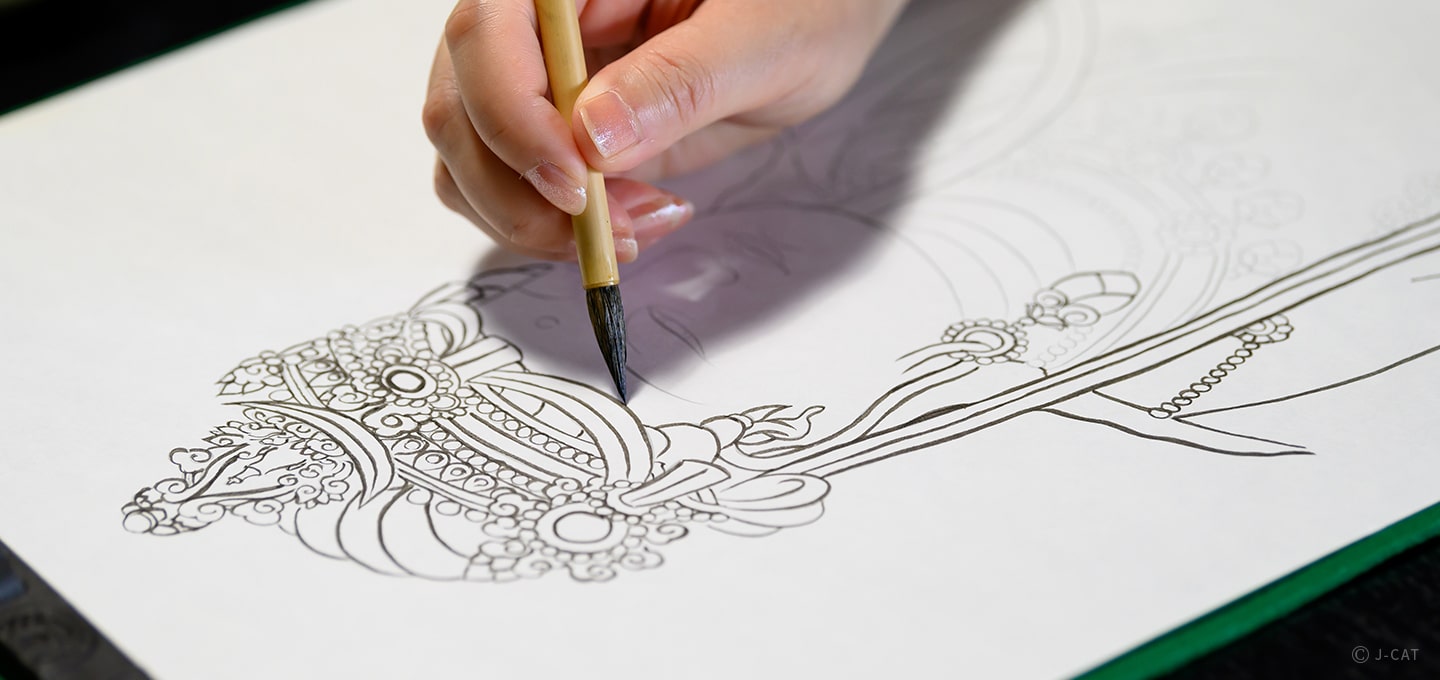
Special Experience
Nara
Practice Buddhist Painting and Sutra Copying at an Ancient Temple
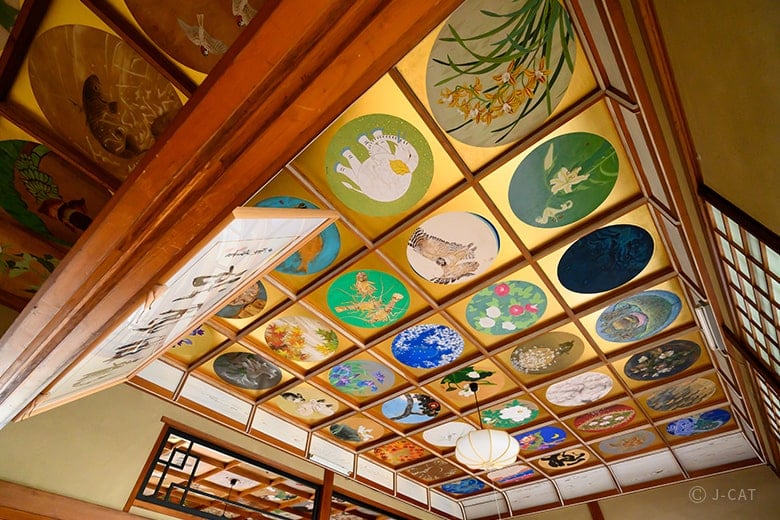
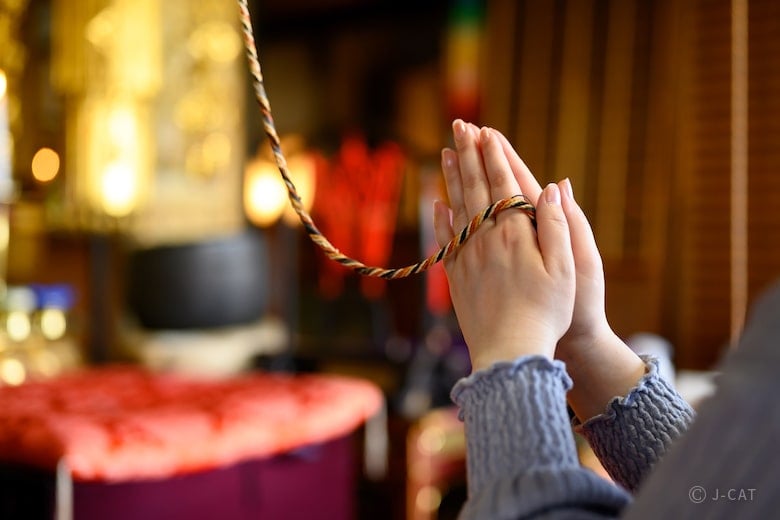
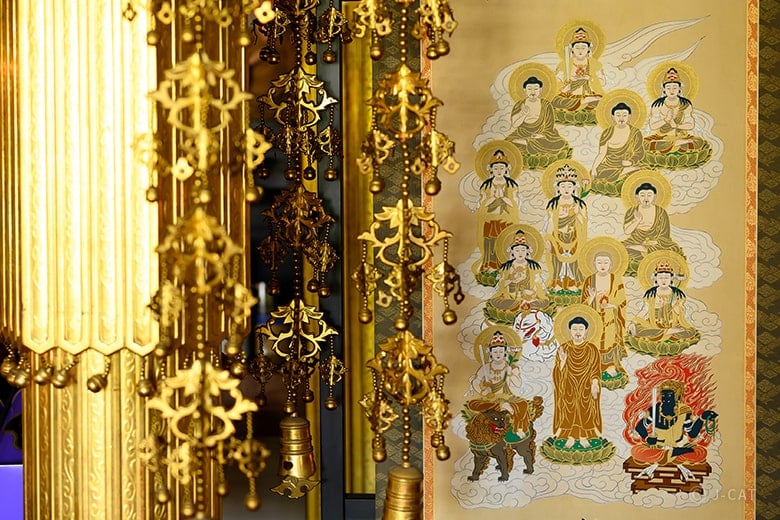
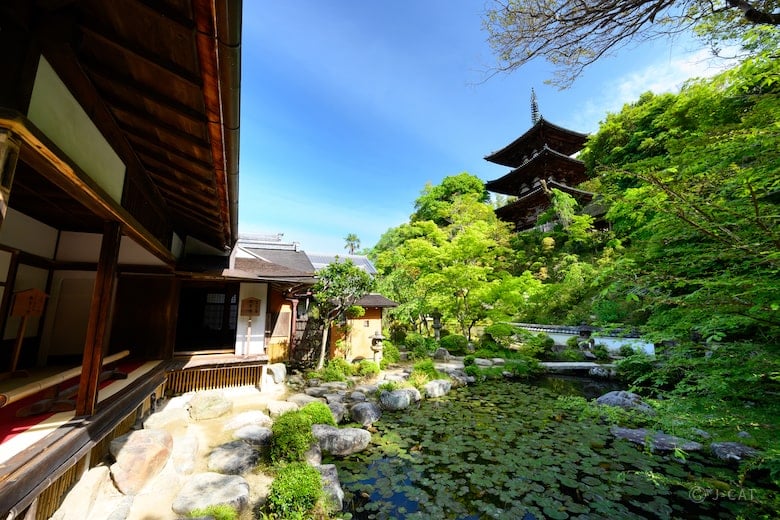
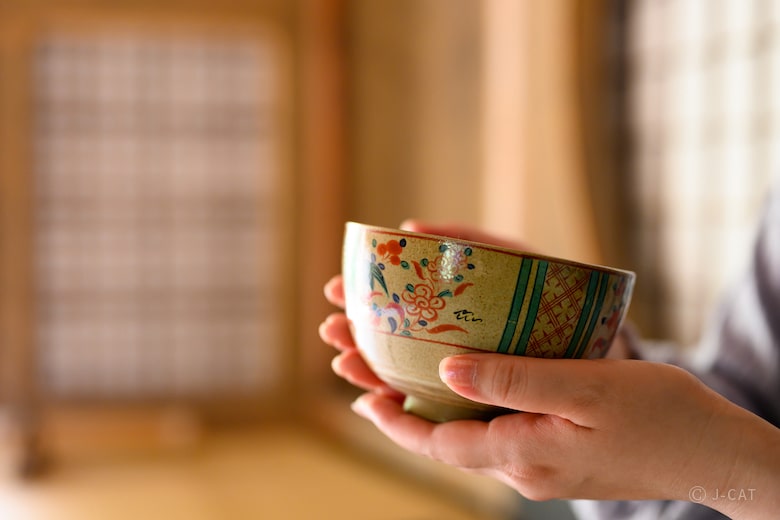
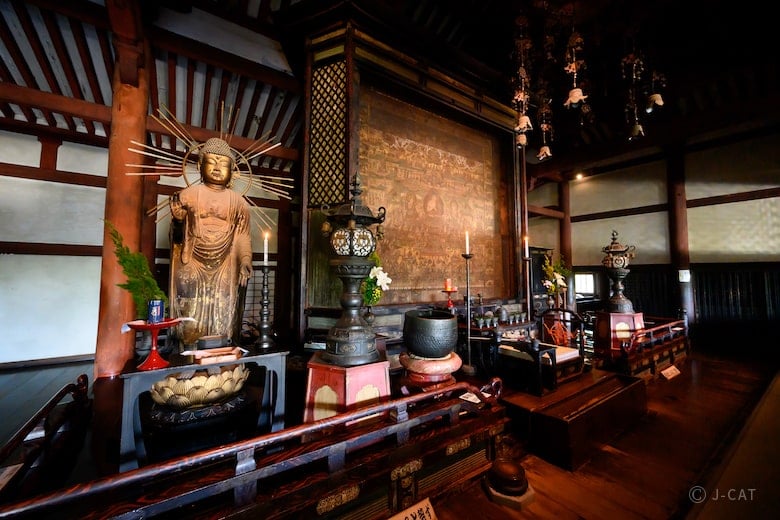
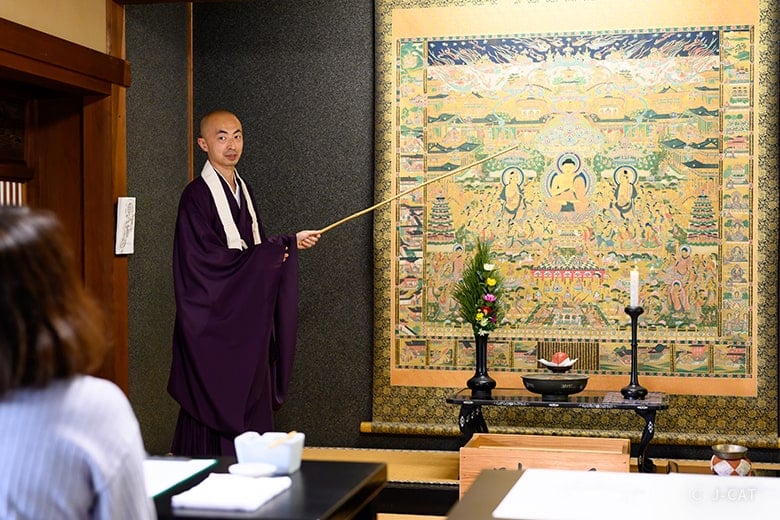
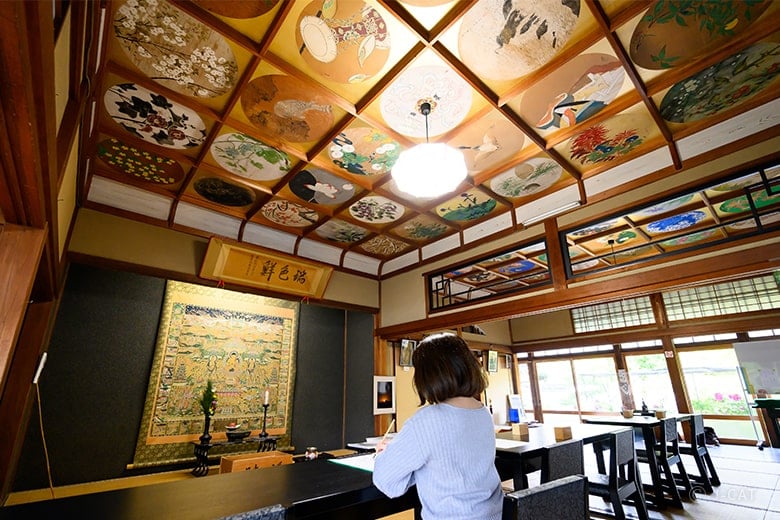








Overview
Enjoy a private tour of one of Japan’s oldest and most storied temples: Taima-dera in the ancient city of Katsuragi. In this exclusive plan, guests will visit the temple's most holy halls, try their hand at the practice of sutra-copying and painting, and enjoy matcha tea in the temple’s famous tea room.
Key Features
・Enjoy privileged access to Taima-dera, an ancient temple rich in myth and legend
・Practice the traditional art of sutra transcription and copy elements from the temple’s famous mandala
・Enjoy matcha tea in a tea room once designated a National Treasure
Nara
150mins
from ¥28,000 /person
1 - 8 participants
Available in English
Cancel free up to 31 days prior
Details
Nakanobo, the Heart of an Ancient Temple
Taima-dera Temple is one of Japan’s oldest, and notable as the only remaining temple in Japan to retain its original three-story pagodas. It principally enshrines the Taima Mandala, an image representing a vision of the Buddhist Pure Land. The Taima Mandala is said to have been completed in a single night by Chujo-hime, a semi-mythical 8th century princess who escaped her evil stepmother to become a nun at the temple.
As the legend of Chujo-hime spread, the temple became famous for its mandala and association with sutra-copying, or shakyo.

The ‘Shaved Head Hall’ is a symbol of Taima-dera
Nakanobo is the oldest temple in the complex. Generations of abbots have taken up residence here, and it is said to be the place where Chujo-hime shaved her head upon becoming a nun. As a temple, it enshrines Kannon, the Buddhist goddess of mercy and Chujo-hime’s guardian. Nakanobo’s garden is said to be one of the best in Japan, and the ancient Eastern Pagoda is a National Treasure of Japan. The temple is also known for its flowers, with dramatic seasonal displays of cherry blossoms, peonies, and more.
Praying to the Goddess of Compassion
Chujo-hime is said to have lived as a nun in Nakanobo — the temple’s ‘Shaved Head Hall’ is so named because she was said to have cut her hair here upon taking holy orders. Buddhist deities often come in many different forms, and Nakanobo specifically enshrines ‘Guiding Kannon’, who healed and protected Chujo-hime throughout her life. Accordingly, Guiding Kannon is said to be the guardian deity of all women.

The head priest worships Guiding Kannon and reads sutras
As part of the tour, guests can enter the Shaved Head Hall and worship Kannon directly to ask for guidance. While in the hall, the head priest will also tell you more about the deep relationship between Taima-dera, Chujo-hime, and the Taima Mandala.

Kannon is physically connected to worshippers
A five-colored cord tied to Kannon’s right hand runs up to the ceiling and onwards to other areas in the temple. Worshippers can hold this cord to feel Kannon’s touch as they pray.
Three Historic Halls
Priests lead tours of three of Taima-dera’s other famous halls: the Mandala Hall, the Kondo Hall, and the Kodo Hall.
The Mandala Hall, also the temple complex’s main hall, houses the Taima Mandala. Chujo-hime is said to have woven it from lotus stems in a single night. It is designated National Treasure and dates back to the eighth century. Nowadays, a fourteenth century reproduction dominates the hall, as the original has become extremely delicate. Both convey a vision of the Buddhist Pure Land, and lend a dramatic atmosphere to the buildings.

Chujo-hime wove the mandala in a single night
The Kondo Hall was once the center of the temple complex, and enshrines a seventh century statue of Maitreya Buddha, the original deity of Taima-dera and Japan’s oldest clay Buddha statue. In the Kodo Hall, Buddhist statues from the early Heian (795–1185) and Kamakura (1185–1333) periods give guests an insight into changing artistic and religious trends through the centuries.

The Mandala Hall is the main building of Taima-dera
A Remarkable Display
The first thing that catches the eye when one enters the Shabutsu Dojo is the ceiling, filled with paintings arranged on the latticework. As many as 150 works by modern and contemporary artists grace the surface.

The ceiling includes paintings by famous artists like Seison Maeda
A quarter-size painting of the Taima Mandala, completed in the modern era, is enshrined at the front of the hall, allowing guests another way to appreciate the masterpiece. Copying aspects of the mandala, known as shabutsu (literally ‘copying a Buddha’), is sometimes offered for large group visits. Exclusively to Wabunka’s plan, small groups and individuals can try their hands at copying aspects of the mandala and of Buddhist sutras, written in classical Chinese or Sanskrit. These practices have been passed down through generations and are still performed as devotional acts today.

A priest explains the meanings expressed in the Taima Mandala.
Tracing Lines of History
Chujo-hime is said to have produced one thousand copies of the Shorter Sukhāvatīvyūha Sutra, saw the Buddha in the setting sun, and expressed it in the Taima Mandala. At the Shabutsu Dojo, guests can follow in her footsteps by copying the mandala and a sutra.

Copying a part of the Taima Mandala
Eight traceable images are available, each portraying a different Buddhist deity, mythological figure, or priest. These include Guiding Kannon and Chujo-hime herself. Feel your mind clear and become quiet as you trace fine lines with your brush

Shabutsu can be a calming, meditative act
Guests can also copy a version of the Shorter Sukhāvatīvyūha Sutra sutra said to be written in Chujo-hime’s own hand. At the end of the experience, you will have made stunning souvenirs of your visit, which can be paired with a traditional goshuin stamp as a record of your visit to the temple.

Transcribe characters written by Chujo-hime over a thousand years ago
A Remarkable Tea Room
The final stop of the tour is the stunning tea room, Marumado-seki. A former National Treasure, it was made to mark the visit of Emperor Go-Sai (1638–85). It features a magnificent circular window of 1.8 meters diameter, which offers sweeping views of the garden. The tea room is also unusual for its use of bamboo. Guests will view Marumado-seki from the garden before moving to Gozatodaime-seki, one of the temple’s private tea rooms.

Marumado-seki’s round window dominates the tea room’s decor
Guests will enjoy tea served in the Ishu style, named after Lord Ishu’s school of tea ceremony. This style of tea ceremony has been enjoyed for nearly five hundred years, especially by the ruling Tokugawa shogun dynasty. Enjoy a cup while gazing out onto Koguen Garden, considered one of the most beautiful in Japan.

Reward yourself for your hard work sutra-copying with a cup of tea
Stroll Through a Serene Garden
After tea, guests will receive a ‘bath herb’ pack — Chujo-hime is said to have learned pharmacology at Taima-dera and created this special bath salt mix. Enjoy it in the bath when you return home to relive memories of your experience and warm yourself to the core.

Ancient pagodas lend the garden a historic atmosphere
Feel free to linger in the garden. Korokuen was designed by Lord Seishu, a tea ceremony instructor to the shogun Tokugawa Ietsuna (1641–80). It features a large pond with a circular path — as you stroll, you may choose to reflect on the story of Chujo-hime or the experience of the day.
Taima-dera Temple Nakanobo

Taima-dera Temple Nakanobo
When Manpozo-in Temple was relocated and became Taima-dera Temple, En no Gyoza opened Nakanobo as a place for Buddhist study and practice. It is the oldest monastery in the temple complex, and known as the site where Chujo-hime cut her hair and began to practice Buddhism as a nun. In the Shaved Head Hall, a statue of Kannon, the guardian deity of Chujo-hime, is worshiped as ‘Guiding Kannon,’ while a sutra written in Chujo-hime’s own hand is stored in Nakanobo’s treasure hall.
Location
Taima-dera Temple Nakanobo
Katsuragi, Nara
Request for booking
Select first preferred date (JST)
January 2026
Sun
Mon
Tue
Wed
Thu
Fri
Sat

Instant Booking

Request Booking

17
Full

17
Unavailable
Nara
150mins
from ¥28,000 /person
1 - 8 participants
Available in English
Cancel free up to 31 days prior
Things to know
Contact Us
If you have any questions, please contact us using the form below.
We also accept bookings from corporate clients and travel agencies.